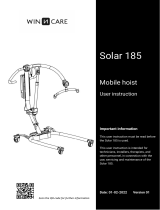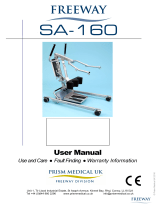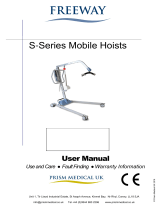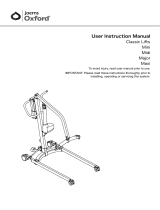Vermeiren Eagle 620 is designed to make patient transfers safe and effortless for caregivers. It features a compact, foldable design for easy maneuverability in tight spaces, and a lifting capacity of up to 620 lbs. The Eagle 620 is equipped with a wide range of slings to accommodate various patient needs, and its adjustable spreader bar ensures a comfortable and secure fit.
Vermeiren Eagle 620 is designed to make patient transfers safe and effortless for caregivers. It features a compact, foldable design for easy maneuverability in tight spaces, and a lifting capacity of up to 620 lbs. The Eagle 620 is equipped with a wide range of slings to accommodate various patient needs, and its adjustable spreader bar ensures a comfortable and secure fit.




















-
 1
1
-
 2
2
-
 3
3
-
 4
4
-
 5
5
-
 6
6
-
 7
7
-
 8
8
-
 9
9
-
 10
10
-
 11
11
-
 12
12
-
 13
13
-
 14
14
-
 15
15
-
 16
16
-
 17
17
-
 18
18
-
 19
19
-
 20
20
-
 21
21
-
 22
22
-
 23
23
-
 24
24
-
 25
25
-
 26
26
-
 27
27
-
 28
28
Vermeiren Eagle 620 is designed to make patient transfers safe and effortless for caregivers. It features a compact, foldable design for easy maneuverability in tight spaces, and a lifting capacity of up to 620 lbs. The Eagle 620 is equipped with a wide range of slings to accommodate various patient needs, and its adjustable spreader bar ensures a comfortable and secure fit.
Ask a question and I''ll find the answer in the document
Finding information in a document is now easier with AI
Related papers
Other documents
-
 Winncare Solar 185 Operating instructions
Winncare Solar 185 Operating instructions
-
Arjohuntleigh MAXI MOVE Instructions For Use Manual
-
 FREEWAY P12028 Operating instructions
FREEWAY P12028 Operating instructions
-
Invacare Robin User manual
-
 FREEWAY P12004 Operating instructions
FREEWAY P12004 Operating instructions
-
 Joerns Oxford® G31334 Operating instructions
Joerns Oxford® G31334 Operating instructions
-
Invacare RPS 440ee User manual
-
Invacare Jasmine User manual
-
Joerns Oxford Dipper User manual
-
Drive Medical STSP450 Owner's manual































